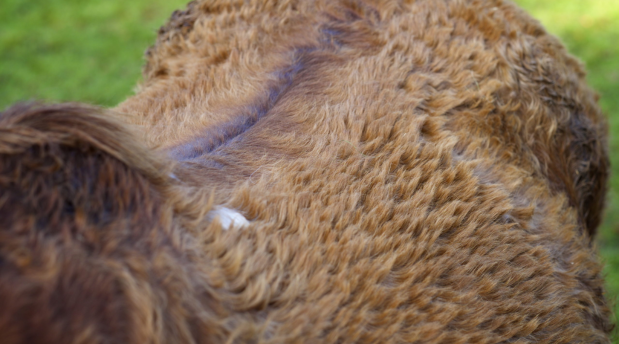Lister News | 13 July 2023
Managing Horses with Cushing's Disease: Top Tips and the Role of Clipping
In this blog, we will provide an overview of Cushing's Disease and discuss some top tips for effectively managing it. Additionally, we will delve into the benefits of clipping as a primary management method for horses with Cushing's Disease.
Cushing's Disease, also known as pituitary pars intermedia dysfunction (PPID), is a common endocrine disorder affecting horses, particularly those in their last stages of life. This chronic condition arises from dysfunction of the pituitary gland, leading to an overproduction of hormones. While there is no cure for Cushing's Disease, proper management strategies can significantly improve the quality of life for horses with this condition. In this blog, we will provide an overview of Cushing's Disease and discuss some top tips for effectively managing it. Additionally, we will delve into the benefits of clipping as a primary management method for horses with Cushing's Disease.
Understanding Cushing's Disease
Cushing's Disease occurs when the pituitary gland, located at the base of the brain, produces excessive amounts of adrenocorticotropic hormone (ACTH). This hormone, in turn, stimulates the adrenal glands to release cortisol, resulting in a hormonal imbalance. The excessive cortisol levels can cause a range of symptoms, including a long, curly coat, muscle wasting, weight loss, abnormal fat distribution, increased susceptibility to infections, and laminitis.
Top Tips for Managing Cushing's Disease in Horses:
1. Consult a Veterinarian: If you suspect your horse may have Cushing's Disease, it is crucial to consult a veterinarian for a proper diagnosis. They can conduct various tests, including blood work and hormonal analysis, to confirm the presence of the disease.
2. Medication: In most cases, veterinarians prescribe a medication called pergolide to manage Cushing's Disease in horses. Pergolide helps regulate hormone production, improving overall health and minimizing symptoms.
3. Regular Veterinary Check-ups: Regular veterinary check-ups are essential to monitor your horse's condition, adjust medication if necessary, and address any emerging health concerns promptly.
4. Dietary Considerations: A balanced diet plays a vital role in managing Cushing's Disease. Consult with your veterinarian or equine nutritionist to develop a diet plan tailored to your horse's specific needs. Emphasize low-sugar and low-starch feeds, along with high-quality forage.
5. Exercise and Turnout: Regular exercise, within the limits of your horse's ability, can help maintain muscle tone, promote circulation, and support overall health. However, be cautious and consider your horse's individual fitness level and any joint or mobility issues they may have.
Clipping as a Primary Management Method:
One of the primary management methods for horses with Cushing's Disease is clipping their long, curly coat. Clipping serves several purposes, including temperature regulation, hygiene and monitoring body condition. We at Lister have developed a special blade for clipping Cushing’s horses. The Covercote is designed to remove the thickness out of the cost, leaving 5mm of manageable, tame hair on the coat.
1. Temperature Regulation: Horses with Cushing's Disease often struggle with thermoregulation due to their abnormally long and thick coat. Clipping helps prevent overheating, especially during warmer months.
2. Grooming and Hygiene: The long, curly coat associated with Cushing's Disease can trap dirt, debris, and sweat, leading to skin conditions and discomfort. Regular clipping helps maintain cleanliness and promotes better skin health.
3. Monitoring Body Condition: Clipping allows for better assessment of your horse's body condition score and muscle tone, which can be challenging to gauge accurately under a thick coat.
While Cushing's Disease is a chronic condition with no cure, effective management strategies can significantly improve the well-being of horses diagnosed with this disorder. By consulting with your veterinarian, following a balanced diet, administering appropriate medication, and providing regular exercise and turnout, you can support your horse's overall health. Furthermore, clipping their long coat can help effectively manage the condition. Remember, each horse is unique, so work closely with your veterinarian to develop an individualized management plan that best suits your horse's needs.

